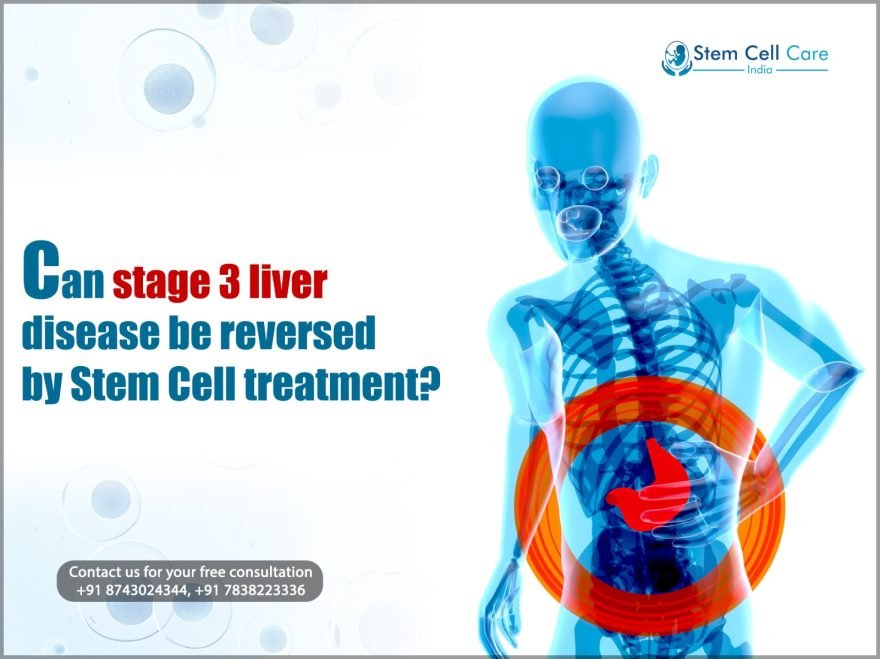Table of Contents
Liver disease is now a chronic and typically progressive condition that impacts millions of people across the world. Stage 3 liver, also known as cirrhosis, is a solely severe form where significant scarring of the liver tissue has occurred, impairing its function. While interest in regenerative therapies—specifically, stem cell treatment—has increased recently due to scientific advancements in medicine, traditional treatments usually concentrate on symptom management and halting further damage. If you want to learn more about stem cell therapy in India, you can visit the website and contact Stem Cell Care India.
Understand Stage 3 Liver Disease
Before you begin to explore stem cell therapy, it is important to understand what stage 3 liver disease entails. When the liver is severely damaged, as occurs with cirrhosis, it is typically due to long-term damage from diseases such as hepatitis, chronic alcohol abuse, or non-alcoholic fatty liver disease (NAFLD). Because of the accumulation of toxins in the blood, symptoms may include confusion, jaundice, exhaustion, and swelling in the legs and abdomen. At this stage, the liver’s ability to regenerate and repair itself is severely compromised, making it challenging to restore normal functions.
Light of Hope: Stem Cell Therapy
A unique type of cell known as stem cells has the ability to differentiate into other body cell types and repair damaged tissues. Because of their ability to regenerate, they offer a promising option for the treatment of severe and chronic illnesses such as liver disease. There are two main types of stem cells used in research and treatment, such as:
- Embryonic Stem Cells (ESCs)
It is typically derived from initial-stage embryos, these cells can develop into any cell type in the body. However, their use is controversial because of ethical concerns.
- Adult Stem Cells (ASCs)
It is found in various tissues, such as bone marrow, adipose tissue, and more. These cells have a more limited differentiation potential than ESCs but are less controversial and widely used in treatments.
For liver disease, researchers are solely interested in mesenchymal stem cells (MSCs) from bone marrow or adipose tissue, or induced pluripotent stem cells (iPSCs), which are adult cells reprogrammed to an embryonic-like state.
Mechanisms of Stem Cell Therapy in Liver Disease
Stem cell therapy focuses on reversing liver damage through several mechanisms:
- Regeneration of Liver Cells: Stem cells can differentiate into hepatocytes, the main functional cells of the liver. After replenishing the liver’s cell population, stem cell therapy can help restore its functionality.
- Anti-Inflammatory: Chronic inflammation is a key driver of liver fibrosis. Stem cells can modulate the immune response, minimizing inflammation and halting the progression of liver damage.
- Fibrosis Reduction: Fibrosis, aka scar tissue formation, is a condition of cirrhosis. Stem cells can secrete factors that break down this scar tissue, potentially reversing some of the structural damage.
- Paracrine Signaling: Stem cells release various growth elements and cytokines that promote tissue repair and regeneration, improve angiogenesis (formation of new blood vessels), and recruit endogenous cells to aid in healing.
Clinical Evidence & Current Research
The clinical trials of stem cell therapy for liver disease are still in their infancy, but initial results are promising. Several research studies have shown the potential of stem cells to enhance liver function and decrease fibrosis in animal models and early-stage human trials.
Future Directions & Challenges
While stem cells do hold great potential to treat several conditions, there are also several challenges that must be addressed before they can become a standard treatment for stage 3 liver disease:
- Standardization: Developing standardized protocols for cell isolation, expansion, and administration is important to ensure consistent and reproducible results.
- Safety: For robust safety, studies are needed to rule out potential risks like immune reactions, tumor formation, or unintended cell differentiation.
- Regulatory Approval: Guiding the regulatory landscape of stem cell therapies can be complex, requiring long-term evidence from well-designed clinical trials.
- Cost and Accessibility: Making stem cell treatments cost-effective and accessible to a broader population is important for widespread adoption.
To Wrap Up
Stem cell therapy has shown some groundbreaking approaches in treating stage 3 liver disease, providing a light of hope for patients with limited options. By harnessing the regenerative potential of stem cells, scientists aim to restore liver function, minimize fibrosis, and improve the quality of life for those affected by cirrhosis. While some progress has been made, continuous research and clinical trials are important to fully realize the potential of this innovative therapy. If you want to undertake this stem cell therapy in Delhi or want to learn more, visit the website of Stem Cell Care India.


